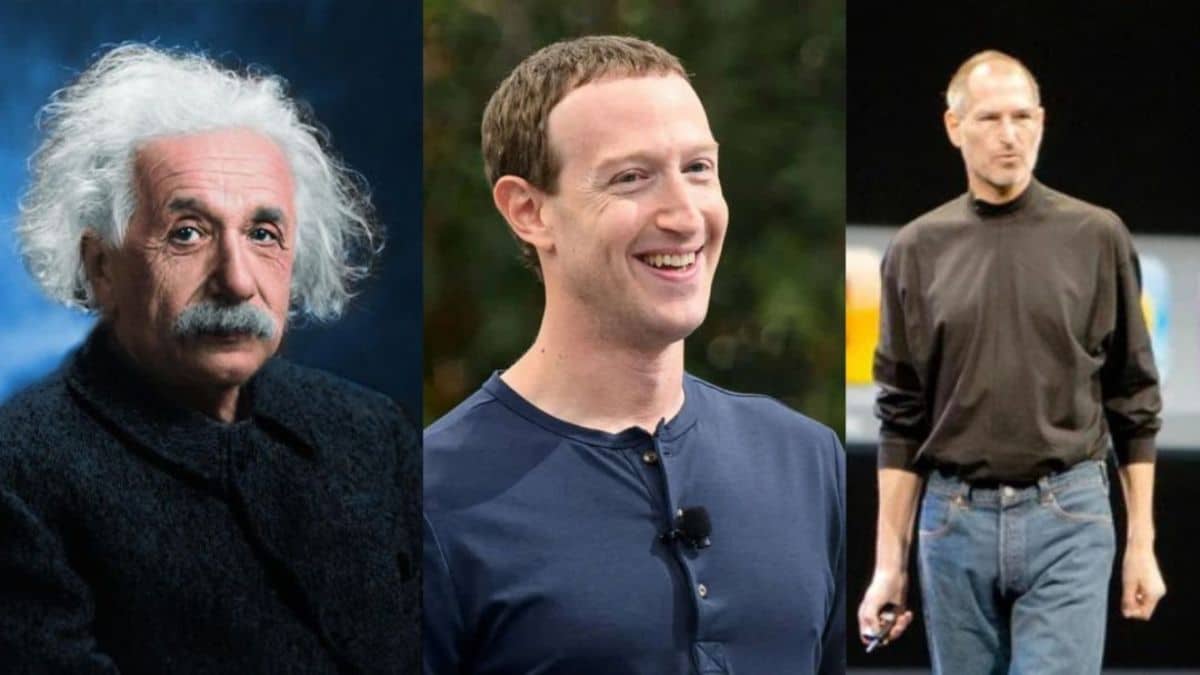In a world of endless choices, some of the greatest innovators have chosen simplicity in their wardrobes. Steve Jobs with his iconic black turtleneck, Mark Zuckerberg in his gray t-shirts, and Albert Einstein with his familiar suits aren’t just fashion statements – they represent a deliberate cognitive strategy. This phenomenon isn’t merely about personal style but connects deeply to how our brains function when making decisions.
The science of decision fatigue and brilliant minds
Our brains make between 10,000 and 40,000 decisions daily, according to MIT lecturer Bob Pozen. Each choice, no matter how small, draws from the same mental reservoir. This cognitive resource isn’t infinite – it depletes with use throughout the day.
Social psychologist Roy F. Baumeister coined the term decision fatigue to describe this phenomenon. After numerous decisions, our mental energy diminishes significantly, affecting our ability to make quality choices. A 2016 study published in the Proceedings of the National Academy of Sciences demonstrated measurable decreases in lateral prefrontal cortex activity – the brain region responsible for complex decision-making – after participants made numerous choices.
For visionaries focused on world-changing innovations, preserving mental energy becomes crucial. By eliminating wardrobe decisions, they protect their cognitive resources for more significant challenges. This strategy isn’t coincidental but deeply rooted in neuroscience.
| Innovator | Signature Outfit | Innovation Focus |
|---|---|---|
| Steve Jobs | Black turtleneck, jeans, New Balance sneakers | Technology revolution, Apple products |
| Mark Zuckerberg | Gray t-shirt, jeans | Social media, connectivity |
| Albert Einstein | Gray suit, white shirt | Physics, relativity theory |
Cute Animal “Smiles” Might Not Mean What You Assume
150+ Eggs Each Morning? Essential Advice for Happy Hens and Peak Egg Output
Personal uniforms as strategic tools
When Walter Isaacson interviewed Steve Jobs for his biography, Jobs explained his clothing choice wasn’t merely aesthetic – it was strategic. By adopting his signature look, he eliminated one category of decisions entirely, preserving mental bandwidth for innovation at Apple.
Einstein similarly chose clothing simplicity not from disinterest in appearance but to reserve his intellectual capacity for unraveling cosmic mysteries. His wardrobe consistency reflected a deliberate choice to prioritize mental resources.
This approach extends beyond tech pioneers and scientists. Former President Barack Obama notably limited his suit choices to blue and gray for similar reasons. “I’m trying to pare down decisions,” he told Vanity Fair in 2012. “I don’t want to make decisions about what I’m eating or wearing because I have too many other decisions to make.”
The benefits of adopting a personal uniform include:
- Reduced morning decision-making stress
- Conservation of mental energy for complex problems
- Elimination of choice paralysis in one life area
- Development of a recognizable personal brand
- Potential time savings averaging 15 minutes daily
Why Are People Suddenly Sleeping with Bay Leaves Under Their Pillows?
"I Dropped 15 Kg Thanks to Intermittent Fasting — Here’s What I Eat in a Typical Day"
How everyday geniuses can apply this strategy
You don’t need to transform industries or develop groundbreaking theories to benefit from this approach. Minimizing decision load can improve anyone’s cognitive performance and focus.
Start by identifying your own version of a “uniform” – perhaps selecting specific outfits for workdays or creating capsule wardrobes with interchangeable pieces. The goal isn’t eliminating all variety but reducing unnecessary choice moments.
Beyond clothing, this principle extends to other routine decisions. Consider simplifying meal planning, morning routines, or commute options. Each decision eliminated preserves mental energy for more meaningful tasks.
The strategy works because our brains don’t distinguish between trivial and important decisions in terms of energy expenditure. Every decision draws from the same cognitive resource regardless of its significance. By strategically eliminating certain choices, you effectively prioritize where your mental energy goes.
This approach represents a fascinating intersection of neuroscience, productivity, and even fashion. The next time you see a successful person wearing seemingly identical outfits, recognize it might not be eccentricity but a deliberate cognitive strategy worth considering for your own life.







